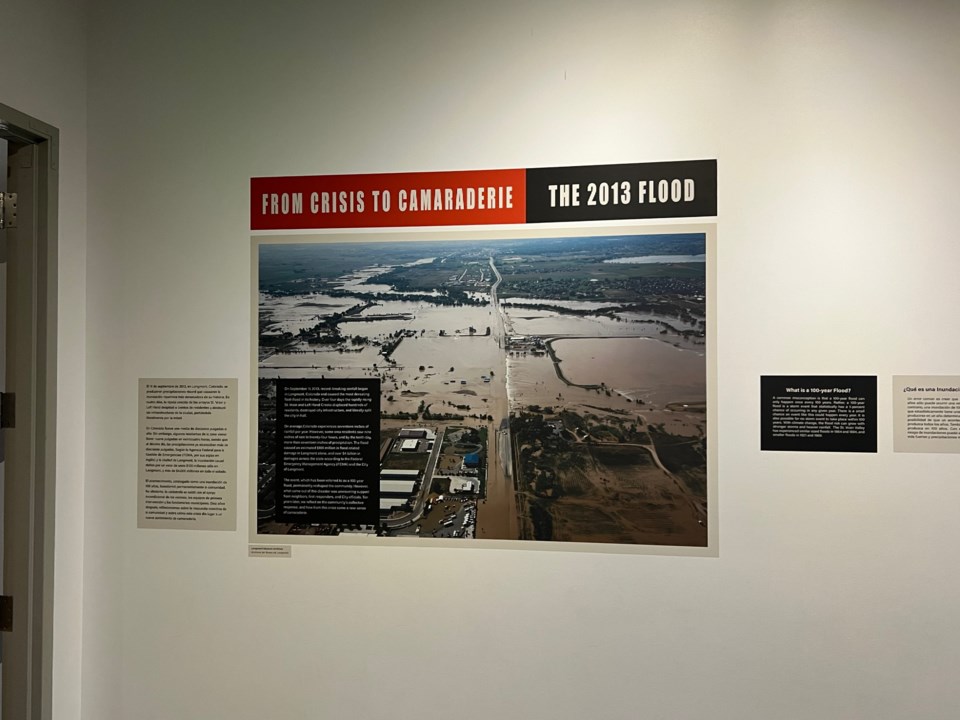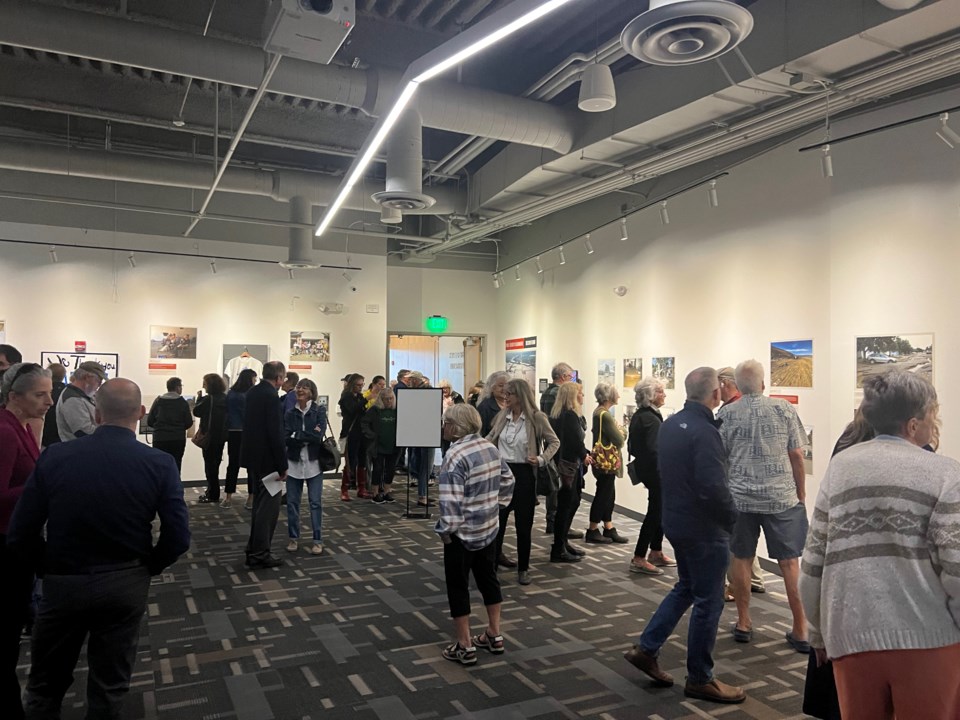On a night when rain fell outside the Longmont Museum, those inside the building who lived through Longmont’s costliest natural disaster faced a deluge of memories stemming from the images on display at “Crisis to Camaraderie: The 2013 Flood Photo Exhibit.”
The first photograph inside the exhibit and the largest on display sparked immediate debate. “This is where the brewery was,” one man said, “tell me why I’m wrong.” After some back and forth, somebody explained that the photo wasn’t an overhead shot of Longmont but one from I-25 and 119 looking west toward town.

No one could blame the man for mistaking the location. Trying to piece together the exact area of town from a picture of a flooded street is no easy task — unless you lived on one of the flooded streets.
“This top picture — that was my neighborhood,” Paul Lloyd, Longmont resident and 2013 flood victim, said. “I own a rental property, and this is the driveway right here; if you go to the end of the street and go right, our house is over there,” Lloyd said as he pointed to different areas of an image on display.
“The picture doesn’t really capture what it smelled like or what it felt like,” Lloyd said, “I mean, all the sewers backed up. We had 3½ feet of water still in our house four days later.”
For others, the displayed media encapsulated exactly what it felt like to live through the disaster. Michael Freyta, a firefighter engineer working for the Longmont Fire Department on the day the flood started, explained how his day started 10 years ago.
“I really wasn’t even supposed to be on duty that day; I traded with another guy because I was going to go to a concert, so we traded the shift, and luck out of luck, I got to be there.”
Looking at a video playing on a television in the middle of the exhibit wall, Freyta relived his experiences. “Here we’re encouraging a little guy because he was really, really scared, and so I kept talking to him saying, ‘come on, we’re gonna get out of here, you just need to hold on to Kevin.’”
Perhaps the most amazing part of the whole disaster was that none of the photographs brought up memories of people who died.
“We did our job. It’s sort of like when you get that chance to hit a home run, you go out and hit it,” Freyta said.
Without hardworking members of the community like Freyta manning the emergency equipment, people could have lost their lives. This is a fact that former city council member Polly Christensen, who was running for city council then, remembers.
“Nobody died here, which is really wonderful,” Christensen said. She remembered going to Button Rock Dam and the Reservoir following the flood and couldn’t believe what she saw. “I thought, I don’t know how they’ll ever fix this, and they did.”
Just as the dam was repaired, alongside many of the images of destruction, the exhibit also showcased fixed and fortified infrastructure to show that Longmont made big strides on its path towards resiliency.
“It just shows you the power of people being determined,” Christensen said.



